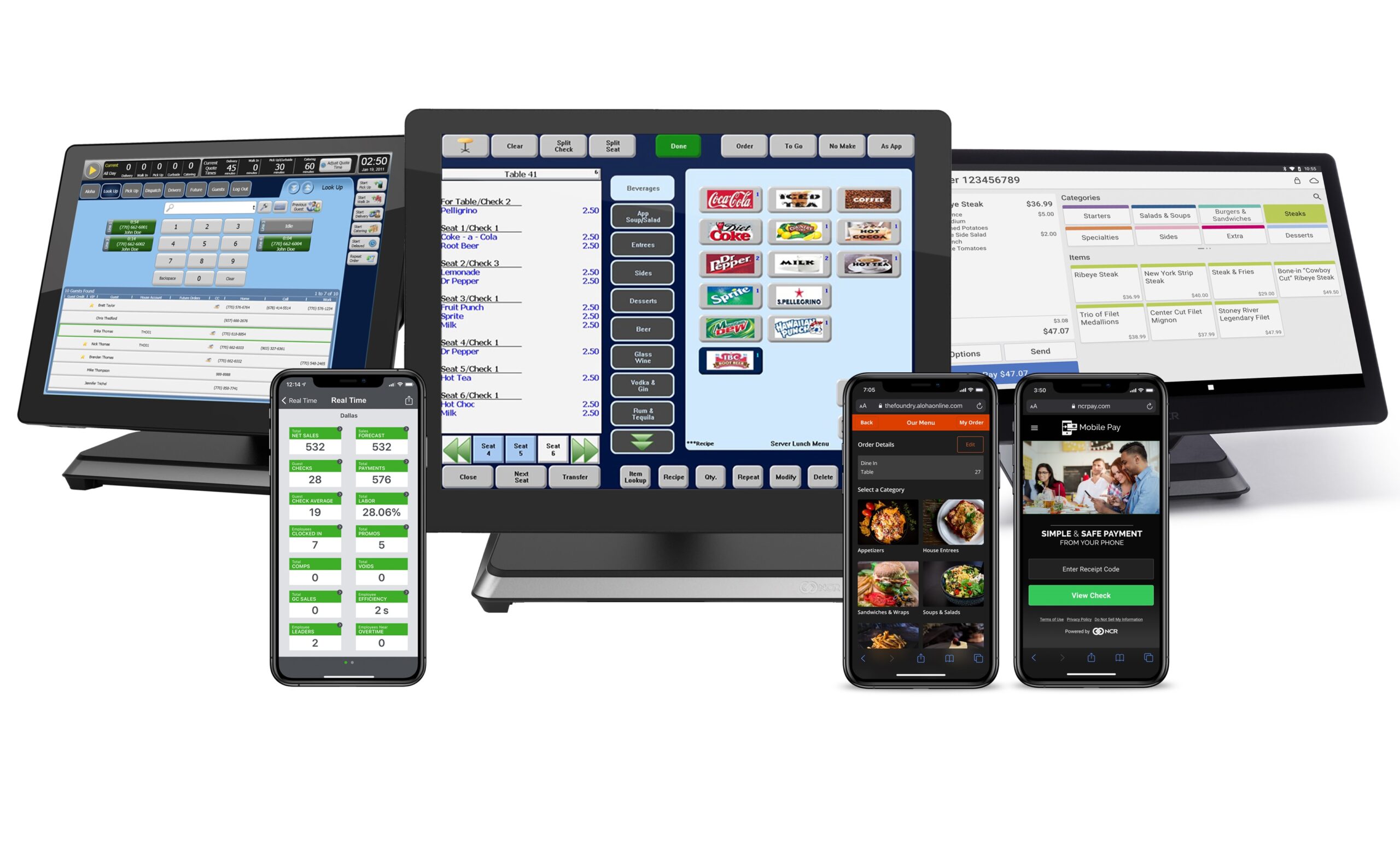Types and Benefits of Restaurant POS Software
What is Restaurant POS
A restaurant POS (point of sale) system is a software and hardware solution used to manage and process transactions in a restaurant or food service business. It allows servers and other restaurant staff to take orders, process payments, and manage inventory, all from one central location.
A typical restaurant POS system includes a touchscreen interface for entering orders, a payment processing module that can accept credit card payments and other payment methods, a database that tracks inventory and sales data, and reporting tools to help restaurant owners analyze business performance. Some systems also offer additional features like online ordering, loyalty programs, and integration with other software systems such as accounting or payroll.
Benefits of restaurant software
There are numerous benefits to using restaurant software, including:
1) Improved Efficiency
Restaurant software can automate time-consuming tasks such as taking orders, processing payments, and managing inventory, allowing staff to focus on providing better customer service.
2) Increased Accuracy
The software eliminates the possibility of human error, reducing mistakes in order taking, billing, and inventory management.
3) Better Customer Service
With restaurant software, servers can quickly access customer data such as preferences and order history, allowing them to provide more personalized and efficient service.
4) Enhanced Data Analysis
The software provides valuable insights into sales trends, inventory levels, and customer behavior, allowing restaurant owners to make informed decisions that can improve their business.
5) Cost Savings
The software can reduce waste and lower labor costs by automating tasks, and providing insights into areas where the business can reduce expenses.
6) Streamlined Operations
With all data stored in one place, restaurant managers can streamline their operations and easily access information from any location.
Overall, restaurant software can help restaurant owners and managers run their businesses more efficiently, increase profitability, and provide better service to their customers.
Advantages of using restaurant POS
There are many advantages of using a restaurant POS (point of sale) system, including:
1) Faster Order Taking
A restaurant POS system allows servers to take orders more quickly and accurately, reducing the time customers have to wait for their food.
2) Improved Order Accuracy
The software minimizes errors in order taking and billing, reducing the risk of mistakes and customer complaints.
3) Better Inventory Management
The system keeps track of inventory levels in real time, allowing restaurant owners to make informed decisions about purchasing and reducing waste.
4) Easier Payment Processing
The system allows for quick and easy payment processing, reducing the time customers spend waiting for their bill.
5) Increased Efficiency
The software automates many manual tasks such as order taking, processing payments, and managing inventory, improving efficiency and reducing labor costs.
6) Enhanced Reporting and Analysis
Restaurant POS systems provide detailed reports on sales, inventory, and other key performance indicators, allowing restaurant owners to make data-driven decisions to improve their business.
7) Integration with Other Software
Many restaurant POS systems can integrate with other software such as accounting or payroll, streamlining operations and reducing the need for manual data entry.
Overall, a restaurant POS system can help restaurant owners and managers to streamline their operations, reduce costs, and provide better service to their customers.
Disadvantages of restaurant POS
While there are many advantages of using a restaurant POS (point of sale) system, there are also some potential disadvantages to consider, including:
1) Cost
Restaurant POS systems can be expensive, particularly for small businesses. The cost includes hardware, software, installation, and ongoing maintenance and support.
2) Complexity
POS systems can be complex, requiring training for staff and ongoing management and maintenance.
3) Technical Issues
Like any technology, POS systems can experience technical issues, which can lead to downtime and lost revenue.
4) Dependence on Electricity
POS systems require electricity to function, so a power outage or other electrical problem can disrupt operations.
5) Security Risks
Restaurant POS systems store sensitive customer data, such as credit card information, and can be vulnerable to cyberattacks and data breaches.
6) Integration Challenges
Integrating a POS system with other software, such as accounting or payroll, can be challenging and require additional resources and expertise.
Overall, while the benefits of using a restaurant POS system outweigh the disadvantages for most businesses, it’s important to carefully consider the costs and potential challenges before making a decision.
What is the use of restaurant POS Software?
The use of restaurant POS (point of sale) software is to provide a comprehensive and efficient solution for managing the operations of a restaurant. The software is designed to streamline the ordering, payment processing, and inventory management processes of a restaurant, allowing owners and managers to focus on providing a high-quality customer experience.
Some of the key uses of restaurant POS software include:
1) Order Taking
POS software allows servers to take orders quickly and accurately, reducing wait times for customers and minimizing the risk of errors.
2) Payment Processing
POS software can process payments quickly and securely, making it easier for customers to pay and reducing the time spent on billing and payment processing.
3) Inventory Management
POS software can help restaurants manage inventory levels and track stock, allowing owners and managers to make informed purchasing decisions and reduce waste.
4) Reporting and Analytics
POS software provides detailed reporting and analytics on sales, inventory, and other key performance indicators, allowing owners and managers to make data-driven decisions to improve their businesses.
5) Menu Management
POS software can be used to manage menus, including pricing, item descriptions, and availability, making it easier to update and change menus as needed.
6) Staff Management
POS software can help manage staff schedules, track employee hours, and calculate wages and tips.
Overall, restaurant POS software provides a comprehensive solution for managing all aspects of a restaurant’s operations, improving efficiency, reducing costs, and enhancing the customer experience.
What are the Types of restaurant Management Systems
There are several types of restaurant management systems, each designed to meet the specific needs of different types of restaurants. Some of the most common types of restaurant management systems include:
1) POS (Point of Sale) System
A POS system is a software and hardware solution used to manage transactions in a restaurant, including order taking, payment processing, and inventory management.
2) Reservation System
A reservation system allows customers to reserve tables online, while also enabling restaurant staff to manage reservations, track guest preferences, and manage waitlists.
3) Kitchen Display System (KDS)
A KDS is a software solution used to manage orders in the kitchen, including order prioritization, item preparation, and order tracking.
4) Inventory Management System
An inventory management system allows restaurants to track inventory levels and manage stock, ensuring that they have the right ingredients and supplies on hand.
5) Accounting and Financial Management System
An accounting and financial management system provides tools for managing accounting tasks, including payroll, taxes, and financial reporting.
6) Customer Relationship Management (CRM) System
A CRM system allows restaurants to manage customer data, including contact information, order history, and preferences, and use that data to provide personalized service and promotions.
7) Online Ordering and Delivery Management System
An online ordering and delivery management system allows restaurants to receive and manage orders placed online, including delivery tracking and management.
Overall, the type of restaurant management system a business needs will depend on its size, type of service, and specific needs. Many restaurant management systems are customizable and can be tailored to meet the unique needs of a particular restaurant.
Conclusion of Restaurant POS Software
In conclusion, restaurant POS (point of sale) software is a valuable tool for managing the operations of a restaurant. The software provides a comprehensive solution for order taking, payment processing, inventory management, and reporting and analytics. By streamlining operations, reducing costs, and enhancing the customer experience, restaurant POS software can help restaurant owners and managers to grow their businesses and improve their bottom lines.
However, it’s important to carefully consider the costs and potential challenges associated with restaurant POS software, including the initial investment, ongoing maintenance and support, and technical issues. It’s also important to choose the right type of restaurant management system that meets the specific needs of the business.
Overall, restaurant POS software is a powerful tool that can help restaurant owners and managers to improve their business, increase efficiency, and provide better service to their customers. With the right software and support, restaurants can take advantage of the many benefits of restaurant POS software to stay competitive in a fast-paced and constantly evolving industry.
What is a restaurant management system?
A restaurant management system is a type of point-of-sale (POS) software specifically designed for restaurants, bars, food trucks, and others in the food service industry. Unlike a POS system, RMS encompasses all back-end needs, such as inventory and staff management.
What is restaurant management software, and how is it useful?
Restaurant management software helps restaurant owners and managers run a restaurant end to end. These tools are used by restaurant employees to keep track of inventory, payroll, orders, and analytics.
What is the main objective of the restaurant management system?
The Restaurant Management System helps the restaurant manager to manage the restaurant more effectively and efficiently by computerizing meal ordering, billing, and inventory control.
What are restaurant systems called?
Point of sale(POS)
POS stands for point of sale, which refers to the time and place – or the point – that a sales transaction is completed. A restaurant point-of-sale system includes POS hardware and hospitality point-of-sale software that manages a sales transaction, including credit card processing, receipt printing, and more.
What is a POS system in a restaurant?
Short for “point of sale”, a restaurant POS system is both the software and hardware restaurants use to take customers’ orders, accept payments, manage food inventory, and ultimately manage the entire operation — from the front of the house (FOH) to the back of the house (BOH).
What are the three types of POS?
There are four main types of POS systems that small businesses use today: legacy, tablet, mobile, and cloud-based POS systems. We’re explaining what each one is, its key features, how much you can expect to pay for them, and several examples of each. Note that these systems have a lot of overlap in what they offer.
What is the purpose of Restaurant Management Software?
The Restaurant Management Software(RMS) helps the restaurant manager to manage the restaurant more effectively and efficiently by computerizing feed ordering, billing, and also inventory control.
What do you need for restaurant management?
Effective restaurant management requires a mix of interpersonal, creative, and leadership skills, plus a compelling vision, a strong team, a suitable venue, delicious food, and technology to help run the business.
Who Uses Restaurant Management Software?
Restaurant management software can be used by everyone who works in a restaurant. Hosts and hostesses can use the platform to accept reservations, manually input a reservation, assign tables, and create a waitlist. Servers can use it to place guest orders, make sales, create or split checks, run credit cards, and generally process payments like a POS system. The kitchen can use the platform to create a menu, mark when menu items are no longer available, receive tickets, and manage inventory. Restaurant owners and managers can receive high-level insights into the business with reports and analytics, manage accounts, handle billing and purchasing, and basically oversee all restaurant operations.
Why do restaurants need software?
POS Software should help you organize your operations, so you can focus on building the restaurant’s face. The system should manage menu items, be capable of inventory management, keep a tab on food costs, and provide restaurant owners and managers with a clear picture at any given point in time.
Contact us for More Services, Which we Provide
7) Chat Service
Contact Us
+91-9380797662
info@emazel.com
Author


